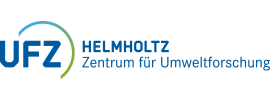Details zur Publikation |
| Kategorie | Textpublikation |
| Referenztyp | Zeitschriften |
| DOI | 10.1016/j.tox.2020.152652 |
Lizenz  |
|
| Titel (primär) | Comparison of quantitation methods in proteomics to define relevant toxicological information on AhR activation of HepG2 cells by BaP |
| Autor | Wang, Z.; Karkossa, I.; Großkopf, H.; Rolle-Kampczyk, U.; Hackermüller, J.
|
| Quelle | Toxicology |
| Erscheinungsjahr | 2020 |
| Department | MOLSYB |
| Band/Volume | 448 |
| Seite von | art. 152652 |
| Sprache | englisch |
| Supplements | Supplement 1 Supplement 2 |
| Keywords | toxicoproteomics; hepatocytes; BaP; AhR; mode of action |
| Abstract | The application of quantitative proteomics provides a new and promising tool for standardized toxicological research. However, choosing a suitable quantitative method still puzzles many researchers because the optimal method needs to be determined. In this study, we investigated the advantages and limitations of two of the most commonly used global quantitative proteomics methods, namely label-free quantitation (LFQ) and tandem mass tags (TMT). As a case study, we exposed hepatocytes (HepG2) to the environmental contaminant benzo[a]pyrene (BaP) using a concentration of 2 µM. Our results revealed that both methods yield a similar proteome coverage, in which for LFQ a wider range of fold changes was observed but with less significant p-values compared to TMT. We detected 37 and 47 significantly enriched pathways by LFQ and TMT, respectively, with 17 overlapping pathways. To define the minimally required effort in proteomics as a benchmark, we artificially reduced the LFQ, and TMT data sets stepwise and compared the pathway enrichment. Thereby, we found that fewer proteins are necessary for detecting significant enrichment of pathways in TMT compared to LFQ, which might be explained by the higher reproducibility of the TMT data that was observed. In summary, we showed that the TMT approach is the preferable one when investigating toxicological questions because it offers a high reproducibility and sufficient proteome coverage in a comparably short time. |
| dauerhafte UFZ-Verlinkung | https://www.ufz.de/index.php?en=20939&ufzPublicationIdentifier=23988 |
| Wang, Z., Karkossa, I., Großkopf, H., Rolle-Kampczyk, U., Hackermüller, J., von Bergen, M., Schubert, K. (2020): Comparison of quantitation methods in proteomics to define relevant toxicological information on AhR activation of HepG2 cells by BaP Toxicology 448 , art. 152652 10.1016/j.tox.2020.152652 |
|
